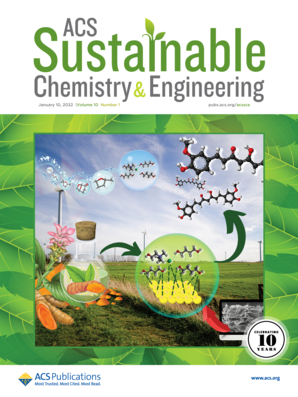Impact of Manganese on the Cycling Performance of Ni-Rich LiNi1–xMnxO2 Cathodes
IF 7.1
1区 化学
Q1 CHEMISTRY, MULTIDISCIPLINARY
引用次数: 0
Abstract
Ni-rich LiNi1–xMnxO2 (NM, x ≤ 0.4) cathodes with high Mn levels have garnered particular attention due to their cost-effectiveness and enhanced safety for lithium-ion batteries, yet their cycling performance remains unsatisfactory. Herein, we investigate the relationship among structure characteristics, cycling performance, and Mn content, revealing that the cycling performance of NM cathodes is associated with Mn-level controlled cation ordering within their structures. Specifically, except for the inherent Li+/Ni2+ disorder, higher Mn levels in NM cathodes tend to disrupt the Ni2+/Mn4+ ordering, resulting in phase segregation and the formation of Mn-enriched regions with Mn3+/Mn3+ pairs. Distorted [Mn3+O6] octahedra, weak interactions between Mn3+ ions, and Mn3+ dissolution in the Mn-enriched regions are detrimental to the structural stability of NM cathodes, thus leading to inferior cycling performance. This study provides a profound understanding of Mn roles in Co-free Ni-rich cathodes and highlights the significance of maintaining cation ordering to achieve high-performance NM cathodes.锰对富镍LiNi1-xMnxO2阴极循环性能的影响
高锰含量的富镍LiNi1-xMnxO2 (NM, x≤0.4)阴极由于其成本效益和增强的锂离子电池安全性而受到特别关注,但其循环性能仍然令人不满意。本文研究了纳米阴极的结构特征、循环性能和Mn含量之间的关系,揭示了纳米阴极的循环性能与其结构中Mn水平控制的阳离子顺序有关。具体来说,除了固有的Li+/Ni2+无序外,NM阴极中较高的Mn水平往往会破坏Ni2+/Mn4+的有序,导致相偏析,形成Mn3+/Mn3+对的富锰区。畸变的[Mn3+O6]八面体、Mn3+离子之间的弱相互作用以及Mn3+在富锰区的溶解都不利于纳米阴极的结构稳定性,从而导致循环性能较差。该研究为Mn在无co富镍阴极中的作用提供了深刻的理解,并强调了保持阳离子有序以实现高性能纳米阴极的重要性。
本文章由计算机程序翻译,如有差异,请以英文原文为准。
求助全文
约1分钟内获得全文
求助全文
来源期刊

ACS Sustainable Chemistry & Engineering
CHEMISTRY, MULTIDISCIPLINARY-ENGINEERING, CHEMICAL
CiteScore
13.80
自引率
4.80%
发文量
1470
审稿时长
1.7 months
期刊介绍:
ACS Sustainable Chemistry & Engineering is a prestigious weekly peer-reviewed scientific journal published by the American Chemical Society. Dedicated to advancing the principles of green chemistry and green engineering, it covers a wide array of research topics including green chemistry, green engineering, biomass, alternative energy, and life cycle assessment.
The journal welcomes submissions in various formats, including Letters, Articles, Features, and Perspectives (Reviews), that address the challenges of sustainability in the chemical enterprise and contribute to the advancement of sustainable practices. Join us in shaping the future of sustainable chemistry and engineering.
 求助内容:
求助内容: 应助结果提醒方式:
应助结果提醒方式:


